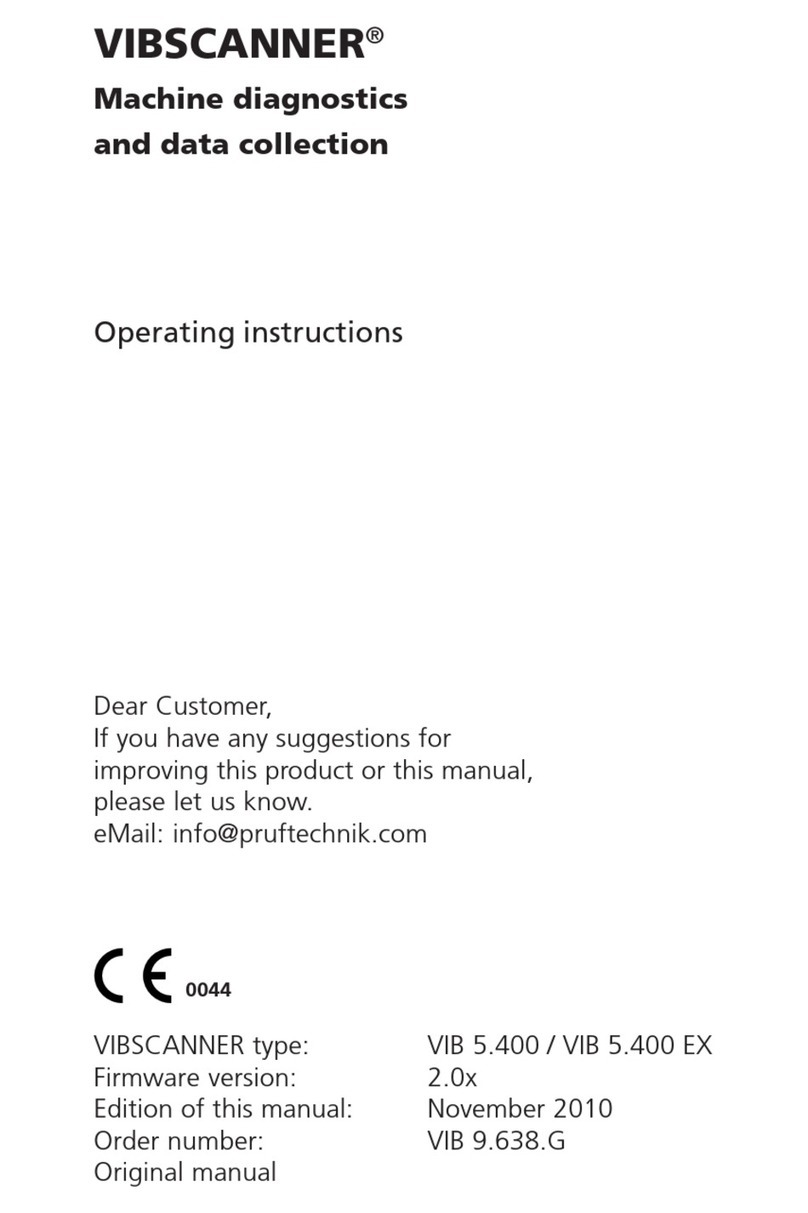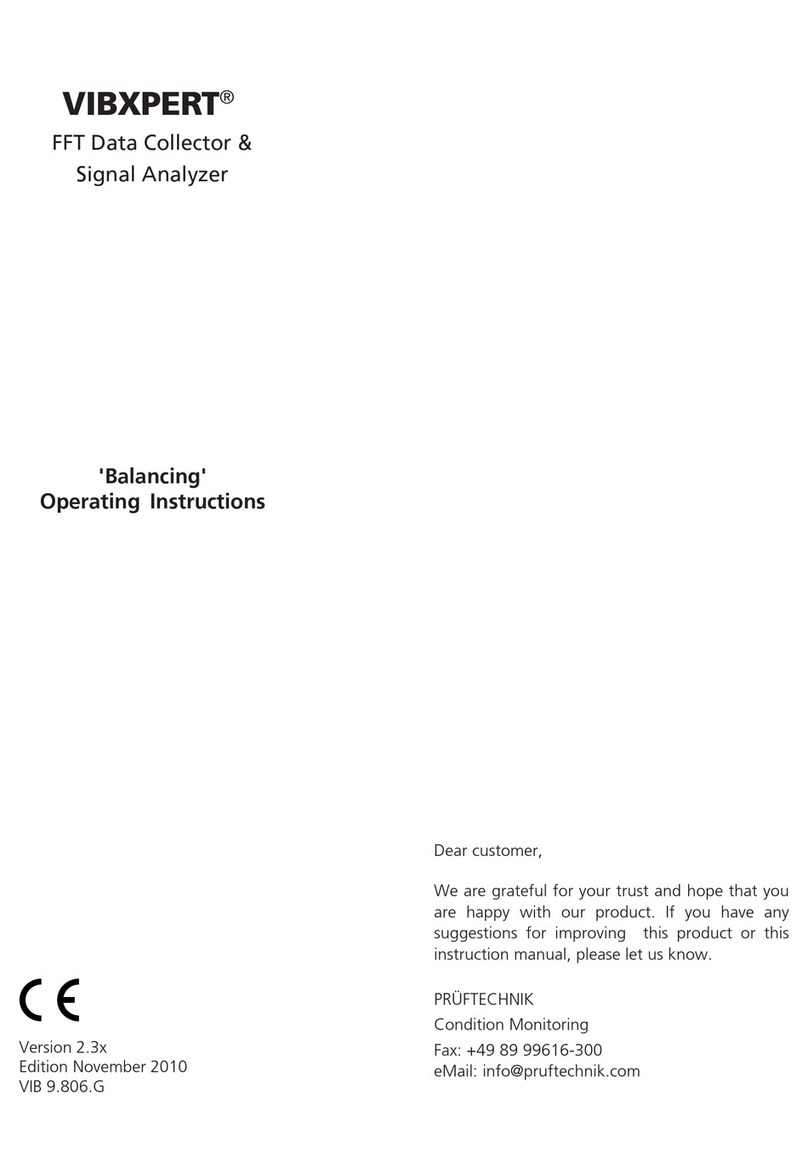
2
Accelerometers of the VIB 6.195 series are used
for the measurement of absolute casing vibrations
on machinery with rotating components. Due to
the very low limit frequency, the accelerometers
are particularly suitable for very slowly rotating
components (n >6 rpm) such as the main bear-
ings of a wind turbine.
The accelerometers have a current linedrive out-
put (CLD).
Safety Information
• Read these operating instructions carefully and
store them.
• Observe the operating instructions of the con-
nected devices.
• Read and observe the safety information in
these operating instructions!
• Only use the accelerometer as intended and for
the permitted purpose of application.
• Use original accessories only.
• Replace defective accelerometers and cables.
• Installation by qualified personnel only.
• Comply with the applicable safety regulations
when performing installation work on running
machines.
• Comply with the applicable safety regulations
when laying cables.
• Observe the technical data and the allowed
operating conditions. In case of doubt, consult
with PRUFTECHNIK.
• The accelerometer is in compliance with Eu-
ropean Directive 2004/108/EC. The complete
Declaration of Conformity is available at www.
pruftechnik.com.
Repair and Maintenance
The operation of the accelerometer is mainte-
nance-free. A repair is not possible.
Disposal
Dispose of the accelerometer after use in accor-
dance with applicable national regulations.
Mounting
The frequency response and dynamic range of an
accelerometer can be greatly influenced by the
installation. Poor coupling to the measurement
location can adversely affect the signal and restrict
the frequency range. In principle, the accelerome-
ter needs a non-positive, resonance-free and rigid
fastening to the measurement location, especially
for measurements with high frequencies.
The most secure and stable coupling is provided
by a screwed mounting, for which a M8 thread-
ed pin is attached to the accelerometer base by
default. For this accelerometer series, depending
on the requirements on site, various mounting
adapters are available as an accessory.
Mounting adapters
– Screw adapter M8-90°, VIB 3.437
(h*= 4)
– Screw adapter M5-flat, VIB 3.439
(h*= 1)
– Bonded adapter, VIB 3.433 (h*= 8)
– Magnetic holder, VIB 3.423 (h*= 10)
* h: Installation height in mm, only adapter
Accelerometer / Screw adapter
Required tools and resources
– Hand-held drill
– Drill bits with depth gauge (4.2 mm /6.8mm)
– Thread tap (M8/M5)
– 90°-countersink (for VIB 3.437)
– Torque wrench, SW22
– Compressed air for cleaning out the hole
– Solvent for degreasing
– Threadlocker (e.g., LOCTITE 243)
• Drill the mounting hole and cut the thread.
Thread hole for screw adapter VIB 3.437



































